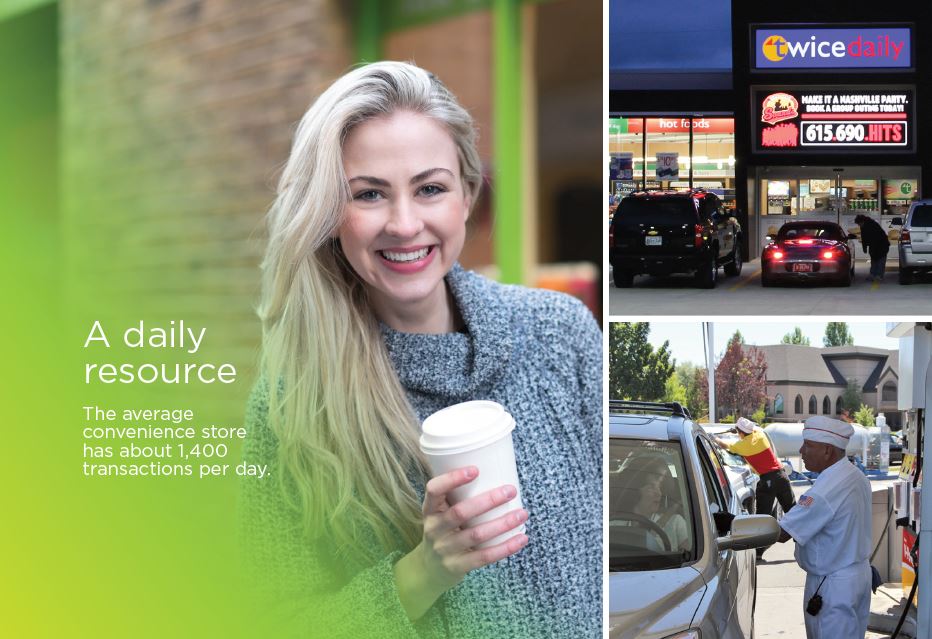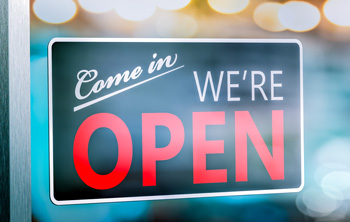
Of the 152,000 convenience stores in the United States, about 90,000 stores (60%) are owned and operated by an individual with one store. Of these one-store operators, many are either franchisees or dealer arrangements where a jobber (fuel distributor) contracts with a retailer to operate the store. Common franchise companies include 7-Eleven and Alimentation Couche-Tard, which owns Circle K stores.
In the franchising model, store owners typically pay an upfront franchising fee plus monthly royalty and advertising fees or a percentage of sales dollars to the franchisor. In exchange, the franchisee gains the benefits that a larger company can provide a small business, such as market intelligence, training, purchasing power for products, proprietary products and services, marketing support and name recognition.
Many oil companies (Shell, BP, Chevron, Exxon, etc.) operate jobber or dealer license arrangements, which are different than the traditional franchise model and relate largely to the brand of fuel that is being sold. Branded fuel (fuel that contains additives by an oil company) is sold at about half of all retail fueling stations.
 Convenience stores are intensely local businesses that offer an ever-growing range of products and services. There is one c-store for every 2,100 people, a key reason why traffic patterns can play a big role in how consumers shop stores. As a result, stores directly across from each other and on the same road both thrive because they serve different traffic patterns. Consumers prize convenience, so for many a left-hand turn across a busy road is inconvenient.
Convenience stores are intensely local businesses that offer an ever-growing range of products and services. There is one c-store for every 2,100 people, a key reason why traffic patterns can play a big role in how consumers shop stores. As a result, stores directly across from each other and on the same road both thrive because they serve different traffic patterns. Consumers prize convenience, so for many a left-hand turn across a busy road is inconvenient.
Before store owners approach a zoning commission, they examine whether an area is oversupplied or undersupplied with convenience stores. They conduct a location quotient analysis, a simple calculation that considers the population of the market and region with the number of operating stores in those areas. If the area is oversaturated, a retailer may not consider a specific location unless there are unique growth opportunities.
Most of all, convenience stores sell time—time that benefits the community, whether this time is spent living in, working in or supporting that community. And this is a commodity that consumers value: More than eight in 10 Americans (82%) support a new store entering their community.
Homeowners are a major political force in most local decisions and for good reason: Purchasing a home is the single-biggest investment most people make. Homeowners also make their voices heard, whether in elections (they are twice as likely to vote as renters) or at local hearings, which means they will often oppose new development if it is perceived as a threat to their property investment.
While the argument is often made in zoning hearings that stores can decrease property values, there is no evidence that the building of a store has led to the deterioration of nearby business or personal property values. In fact, the opposite may be true. Legal rulings (including Middlesex, Connecticut, Superior Court, 2007) have noted that “any project that would remove an existing eyesore (empty lot, closed or under maintained business, empty building, etc.) and replace it with a modern facility which would fit in well”... [would] “enhance the value of the properties in the vicinity.”
In addition to a successful business potentially increasing property values, the industry also can decrease the tax burden related to residential property taxes.
The average store collects about $1.4 million in taxes for local, state and federal governments. This includes property taxes, payroll taxes, sales taxes and taxes that are assessed on a variety of products sold at convenience stores. Moreover, these taxes are collected in a small format footprint, but even factoring in a total lot size of 70,000 square feet, convenience stores generate about $19 per square foot per year in taxes, a figure that compares very favorably to even the busiest large-format stores.
Also, convenience stores create economic stability and growth. In 2023, convenience stores provided 2.74 million jobs across the United States and had sales of $859.8 billion.
According to the FBI's 2022 Crime in the Nation statistics, convenience stores and gas stations combined represented nearly 14% all robberies in the United States.
Retailers strive to operate a business where employees and customers feel safe from potential crimes by implementing a thoughtful security and safety program in their stores, which begins with store layout and design. For example:
- Proper store maintenance is a major deterrent for criminals.
- Curb appeal, such as clean stores, parking lots and landscaping can help discourage criminals from entering the property.
- A well-lit store is a major deterrence for criminals. Effective lighting and security cameras are strong indicators—and visual cues to customers—that a store is vigilant about providing a safe environment, both on the lot and inside the store.
- By removing signage and decals from windows and doors, and utilizing low shelving units, convenience retailers provide an inviting atmosphere for their customers as well as clear lines of sight for employees throughout the store and on the lot.
Security experts also encourage retailers to minimize cash on hand at stores by using time-release drop safes or other means to limit the amount of money available. Safety is the No. 1 priority for convenience stores, and retailers significantly invest in employee training, giving them guidance and resources to remain vigilant about detecting suspicious patrons and potential crimes.
 Convenience stores are one of the few 24/7 businesses that provide much-needed food, fuel and refreshment for millions of Americans, especially first responders, police officers, firemen, factory workers, hospital workers and restaurant employees.
Convenience stores are one of the few 24/7 businesses that provide much-needed food, fuel and refreshment for millions of Americans, especially first responders, police officers, firemen, factory workers, hospital workers and restaurant employees.
Increasingly, Americans working later shifts depend upon these businesses, which are often the only stores open to serve them. Today, more than one in seven workers (15% of all full-time wage-earners) are defined as “shift workers” (those who work between 6:00 p.m. and 7:00 a.m.), according to the U.S. Bureau of Labor Statistics.
For some professions, shift work is much more common. More than half (51%) of all protective service workers (police, fire, EMT, etc.) work either second or third shifts. More than one in four (28%) health-care support workers (hospital, home care, etc.) work second or third shifts. Workers supporting other critical services also are more likely to work later shifts. Approximately three in 10 (29%) of transportation workers (truckers, delivery, etc.) work second or third shifts, as do four in 10 (40%) of those involved with food preparation and related occupations.
Many retailers say people who work non-traditional hours are served during the overnight hours of operation. Overall, 68% of these retailers say that the sales justify keeping the stores open. Late-night and early-morning customers depend upon stores for essential items that are not readily available elsewhere, and top reasons for a visit are shopping for a snack or meal, coffee or beverage, gasoline and cold medicine or to use the ATM, according to NACS member survey results.
As 24/7 operations, retailers are in a unique position to assist at-risk youth through programs such as National Safe Place. Through this community outreach program, agencies, local businesses and local government partner with to create a network of “Safe Places,” where youth in crisis can seek immediate help. Safe Place sites are identified by the bright yellow and black diamond-shaped “Safe Place” signs or decals.